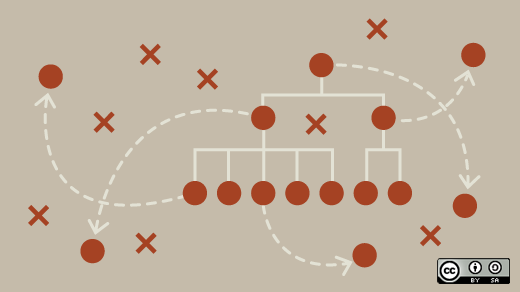Businesses with more than a handful of employees have a lot to balance including pricing, product planning, accounting and finance, managing payroll, dealing with inventory, and more. Stitching together a set of disparate tools to handle those jobs is a quick, cheap, and dirty way to get things done.
That approach isn't scalable. It's difficult to efficiently move data between the various pieces of such an ad-hoc system. As well, it can be difficult to maintain.
Instead, most growing businesses turn to an enterprise resource planning (ERP) system.
The big guns in that space are Oracle, SAP, and Microsoft Dynamics. Their offerings are comprehensive, but also expensive. What happens if your business can't afford one of those big implementations or if your needs are simple? You turn to the open source alternatives.
What to look for in an ERP system
Obviously, you want a system that suits your needs. Depending on those needs, more features doesn't always mean better. However, your needs might change as your business grows, so you'll want to find an ERP system that can expand to meet your new needs. That could mean the system has additional modules or just supports plugins and add-ons.
Most open source ERP systems are web applications. You can download and install them on your server. But if you don't want (or don't have the skills or staff) to maintain a system yourself, then make sure there's a hosted version of the application available.
Finally, you'll want to make sure the application has good documentation and good support—either in the form of paid support or an active user community.
There are a number of flexible, feature-rich, and cost-effective open source ERP systems out there. Here are nine to check out if you're in the market for such a system.
ADempiere
Like most other open source ERP solutions, ADempiere is targeted at small and midsized businesses. It's been around awhile—the project was formed in 2006 as a fork from the Compiere ERP software.
Its Italian name means to achieve or satisfy, and its "multidimensional" ERP features aim to help businesses satisfy a wide range of needs. It adds supply chain management (SCM) and customer relationship management (CRM) features to its ERP suite to help manage sales, purchasing, inventory, and accounting processes in one piece of software. Its latest release, v.3.9.0, updated its user interface, point-of-sale, HR, payroll, and other features.
As a multiplatform, Java-based cloud solution, ADempiere is accessible on Linux, Unix, Windows, MacOS, smartphones, and tablets. It is licensed under GPLv2. If you'd like to learn more, take its demo for a test run or access its source code on GitHub.
Apache OFBiz
Apache OFBiz's suite of related business tools is built on a common architecture that enables organizations to customize the ERP to their needs. As a result, it's best suited for midsize or large enterprises that have the internal development resources to adapt and integrate it within their existing IT and business processes.
OFBiz is a mature open source ERP system; its website says it's been a top-level Apache project for a decade. Modules are available for accounting, manufacturing, HR, inventory management, catalog management, CRM, and e-commerce. You can also try out its e-commerce web store and backend ERP applications on its demo page.
Apache OFBiz's source code can be found in the project's repository. It is written in Java and licensed under an Apache 2.0 license.
Dolibarr
Dolibarr offers end-to-end management for small and midsize businesses—from keeping track of invoices, contracts, inventory, orders, and payments to managing documents and supporting electronic point-of-sale system. It's all wrapped in a fairly clean interface.
If you're wondering what Dolibarr can't do, here's some documentation about that.
In addition to an online demo, Dolibarr also has an add-ons store where you can buy software that extends its features. You can check out its source code on GitHub; it's licensed under GPLv3 or any later version.
ERPNext
ERPNext is one of those classic open source projects; in fact, it was featured on Opensource.com way back in 2014. It was designed to scratch a particular itch, in this case replacing a creaky and expensive proprietary ERP implementation.
ERPNext was built for small and midsized businesses. It includes modules for accounting, managing inventory, sales, purchase, and project management. The applications that make up ERPNext are form-driven—you fill information in a set of fields and let the application do the rest. The whole suite is easy to use.
If you're interested, you can request a demo before taking the plunge and downloading it or buying a subscription to the hosted service.
Metasfresh
Metasfresh's name reflects its commitment to keeping its code "fresh." It's released weekly updates since late 2015, when its founders forked the code from the ADempiere project. Like ADempiere, it's an open source ERP based on Java targeted at the small and midsize business market.
While it's a younger project than most of the other software described here, it's attracted some early, positive attention, such as being named a finalist for the Initiative Mittelstand "best of open source" IT innovation award.
Metasfresh is free when self-hosted or for one user via the cloud, or on a monthly subscription fee basis as a cloud-hosted solution for 1-100 users. Its source code is available under the GPLv2 license at GitHub and its cloud version is licensed under GPLv3.
Odoo
Odoo is an integrated suite of applications that includes modules for project management, billing, accounting, inventory management, manufacturing, and purchasing. Those modules can communicate with each other to efficiently and seamlessly exchange information.
While ERP can be complex, Odoo makes it friendlier with a simple, almost spartan interface. The interface is reminiscent of Google Drive, with just the functions you need visible. You can give Odoo a try before you decide to sign up.
Odoo is a web-based tool. Subscriptions to individual modules will set you back $20 (USD) a month for each one. You can also download it or grab the source code from GitHub. It's licensed under LGPLv3.
Tryton
Tryton's based on a EPR system called TinyERP and has been around since 2008. Over its lifetime, Tryton has grown both in popularity and flexibility.
Tryton is aimed at businesses of all sizes, and has a range of modules. Those include accounting, sales, invoicing, project management, shipping, analytics, and inventory management. Tryton's not all or not, though. The system is modular, so you can install only the modules your business needs. While the system is web based, there are desktop clients for Windows and MacOS.
The online demo will give you an idea of what Tryton can do. When you're ready, you can install it using a Docker image, download the source code or get the code from the project's Mercurial repository. The source code, in case you're wondering, is licensed under GPLv3 or later.
Axelor ERP
Boasting over 20 components, Axelor ERP is a complete ERP system — one that covers purchasing and invoicing, sales and accounting, stock and cash management, and more. All of that comes wrapped in a clean and easy-to-use interface.
And it's that interface that sets Axelor apart from many of its competitors. All of Alexor's components are grouped in the pane on the left side of its window. Everything you need to do is a couple of clicks away. If, say, you need to refund a customer click Invoicing and then click Cust. Refunds. Everything you need is at the beck and call of your mouse cursor.
Install Axelor using a Docker image or grab the source code from GitHub, which is published under an AGPLv3 license. Before you install Axelor, consider taking it for a spin to get a feel for the system.
xTuple PostBooks
If your manufacturing, distribution, or e-commerce business has outgrown its small business roots and is looking for an ERP to grow with you, you may want to check out xTuple PostBooks. It's a comprehensive solution built around its core ERP, accounting, and CRM features that adds inventory, distribution, purchasing, and vendor reporting capabilities.
xTuple is available under the Common Public Attribution License (CPAL), and the project welcomes developers to fork it to create other business software for inventory-based manufacturers. Its web app core is written in JavaScript, and its source code can be found on GitHub. To see if it's right for you, register for a free demo on xTuple's website.
There are many other open source ERP options you can choose from—others you might want to check out include Tryton, which is written in Python and uses the PostgreSQL database engine, or the Java-based Axelor, which touts users' ability to create or modify business apps with a drag-and-drop interface. And, if your favorite open source ERP solution isn't on the list, please share it with us in the comments. You might also check out our list of top supply chain management tools.
This article is updated from a previous version authored by Opensource.com moderator Scott Nesbitt.
This article was originally published in 2018 and has been updated with new information









8 Comments